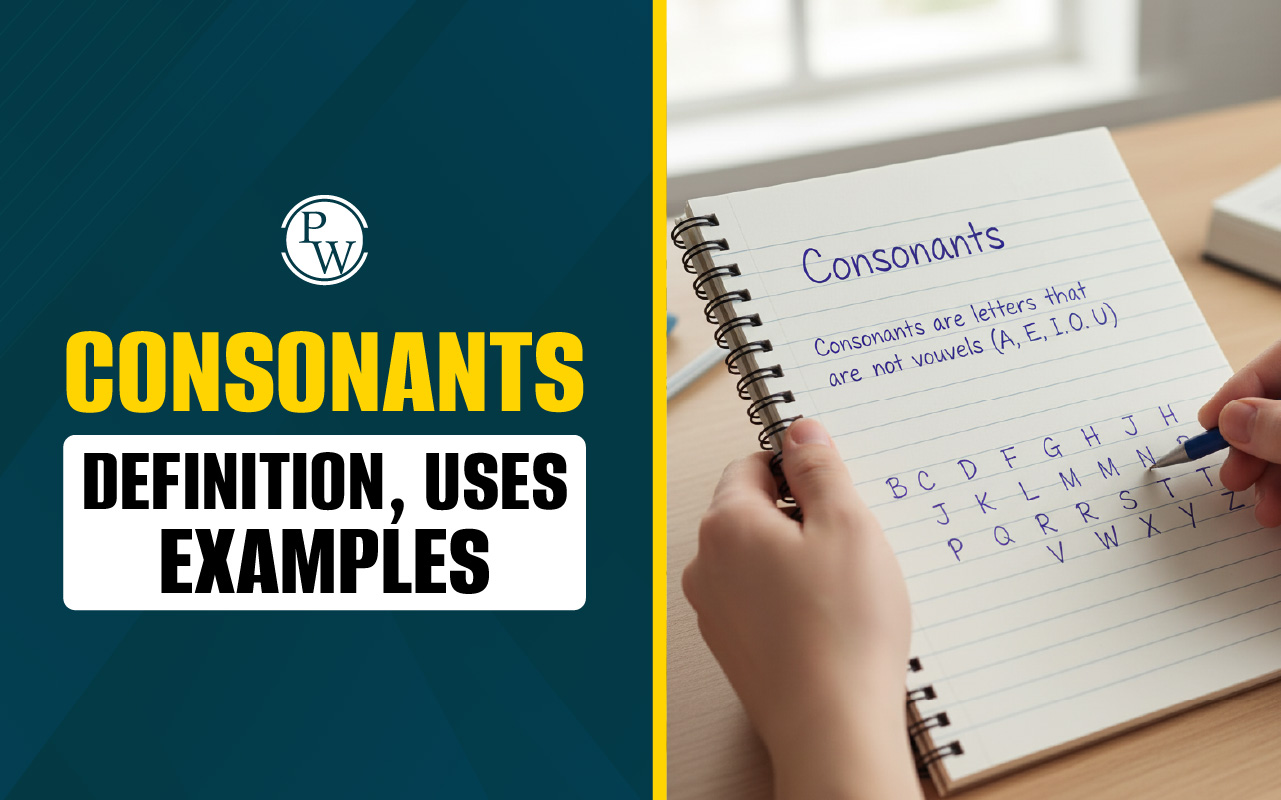
NCERT Solutions for Class 5 Maths Chapter 6: In NCERT Class 5 Maths Chapter 6, titled "Be My Multiple, I'll Be Your Factor," students explore the world of shapes and numbers. This chapter introduces them to the idea of multiples and factors using fun examples and pictures.
It helps kids understand how numbers relate to each other when you multiply and divide them. Throughout the chapter, students solve different problems and exercises that show them how to use multiplication and division in everyday situations. By the end, they'll have a good grasp of multiples and factors, which sets them up well for more complex math concepts. The NCERT solutions provided for this chapter make sure students understand everything clearly and can enjoy learning maths.NCERT Solutions for Class 5 Maths PDF
Here we have provided NCERT Solutions for Class 5 Maths Chapter 6 Be My Multiple, I'll Be Your Factor PDF for the ease of students so that they can easily use these solutions anywhere and anytime. These solutions will help students to clear their concepts in a better and fun way.NCERT Solutions for Class 5 Maths PDF
NCERT Solutions for Class 5 Maths Chapter 6 Be My Multiple, I'll Be Your Factor
Page: 87
1. The hungry cat is trying to catch Kunjan, the mouse. Kunjan is now on the 14th step, and it can jump 2 steps at a time. The cat is on the third step. She can jump 3 steps at a time. If the mouse reaches 28, it can hide in the hole. Find out whether the mouse can get away safely.
a) The steps on which the mouse jumps
Solution:-
The mouse is jumping in increments of 2 steps each time, starting from the 14th step. So, after jumping from the 14th step, it lands on the 16th step, then the 18th step, and so on until it reaches the 28th step. Each time, it's adding 2 steps to its current position.b) The steps on which the cat jumps
Solution:-
The cat is jumping in increments of 3 steps each time, starting from the 3rd step. So, after jumping from the 3rd step, it lands on the 6th step, then the 9th step, and so on until it reaches the 27th step. Each time, it's adding 3 steps to its current position.c) The steps on which both the cat and the mouse jump
Solution:-
The steps on which both the cat and the mouse jump are the 18 th and 24 th steps.d) Can the mouse get away?
Solution:-
Yes, the mouse can get away.NCERT Solutions for Class 5 Maths
2. Find out
If the cat starts from the 5 th step and jumps five steps at a time, and the mouse starts from the 8 th step and jumps four steps at a time, can the mouse get away?
Solution:-
The cat and the mouse are on a staircase, and they're both making jumps of different lengths. If the cat starts from the 5th step and jumps five steps at a time, it will indeed catch up to the mouse, who starts from the 8th step and jumps four steps at a time. Both the cat and the mouse will meet at the 20th step, where the mouse lands after its fourth jump and the cat lands after its fourth jump. At this point, the cat will easily catch the mouse since they are on the same step.3. Who is Monto waiting for?
Monto cat is waiting for somebody. Do you know for whom he is waiting?
There is a trick to find out.
 Mark with a red dot all the numbers which can be divided by 2.
Mark with a red dot all the numbers which can be divided by 2.
Mark a yellow dot on the numbers which can be divided by 3 and a blue dot on the numbers which can be divided by 4.
Solution:-
 (i) Which are the boxes that have dots of all three colours?
(i) Which are the boxes that have dots of all three colours?
Solution:-
The boxes with dots of all three colours are 12, 24, 36, 48, and 60.(ii) What are the letters on top of these boxes?
Solution:-
The letters on top of these boxes are M, O, U, S, and E.(iii) Write the letters, M, O, U, S, and E, in order .
Solution:-
MOUSE, So, Monto cat is waiting for Mouse.4. Meow Game: To play this game, everyone stands in a circle. One player calls out ‘one’. The next player says ‘two’ and so on. A player who has to call out 3 or a number which can be divided by 3 has to say ‘Meow’ instead of the number. One who forgets to say ‘Meow’ is out of the game. The last player left is the winner.
Which numbers did you replace with ‘Meow’?
Solution:-
The numbers which replace with ‘Meow’ and multiples of 3 are, 3, 6, 9, 12, 15, 18, 21, 24, 27, 30, 33, 36, 39, 42, 45 and so on.5. We say these numbers are multiples of 4. Find the numbers.
Play the game by changing the number to 4. Now, which numbers did you replace with ‘Meow’? These numbers are the multiples of 4.
Solution:-
The numbers which replace with ‘Meow’ and multiples of 4 are, 4, 8, 12, 16, 20, 24, 28, 32, 36, 40, and so on.(i) Write any ten multiples of 5.
Solution:-
Ten multiples of 5 are 5, 10, 15, 20, 25, 30, 35, 40, 45, and 50.6. Common Multiples
(i) Think of a number. If it is a multiple of 3, write it in the red circle. If it is a multiple of 5, write it in the blue circle.
 Solution:- 6 and 36 are multiple of 3. 10 and 40 are multiple of 5. Then,
Solution:- 6 and 36 are multiple of 3. 10 and 40 are multiple of 5. Then,  (ii) Some numbers are multiples of both 3 and 5. So we can say that they are both 3 and 5. Think! If you write the multiples common to 3 and 5 in the purple part, then will they still be in both the red and the blue circles?
(ii) Some numbers are multiples of both 3 and 5. So we can say that they are both 3 and 5. Think! If you write the multiples common to 3 and 5 in the purple part, then will they still be in both the red and the blue circles?
Solution:-
15 and 30 are the numbers which are multiples of both 3 and 5. 7. Repeat the game by putting the multiples of 4, 6 and 5 in the circles.
7. Repeat the game by putting the multiples of 4, 6 and 5 in the circles.  Solution:-
Solution:-  (i) What common multiples of 5 and 6 did you write in the green part?
(i) What common multiples of 5 and 6 did you write in the green part?
Solution:-
30 and 60 are the common multiples of 5 and 6.(ii) What common multiples of 4 and 6 are written in the orange part?
Solution:-
12 and 24 are the common multiples of 4 and 6.(iii) In which coloured part did you write the common multiples of 4, 6 and 5?
Solution:-
The common multiples of 4, 6 and 5 are written in the grey part.(iv) What is the smallest common multiple of 4, 6 and 5?
Solution:-
The smallest common multiple of 4, 6 and 5 is 60.8. Tamarind seeds.
(i) Sunita took some tamarind (imli) seeds. She made groups of five with them and found that one seed was left over. She tried making groups of six and groups of four. Each time one seed was left over. What is the smallest number of seeds that Sunita had?
Solution:-
From the question, it is given that, Sunita is trying to make groups of four, five, and six every time; one seed remains. So, now we calculate the LCM of 4, 5, and 6 and add 1 to the LCM. LCM of 4, 5, and 6 is 60 Adding 1 to the LCM, we get 61 Therefore, the smallest number of seeds that Sunita had was 61.9. More tamarind seeds
Ammini arranges 12 tamarind seeds in the form of different rectangles. Try to make more rectangles like this using 12 tamarind seeds. How many different rectangles can you make?
Solution:-
I got four different rectangles, as shown in the figure below, (i) If there are 15 tamarind seeds, how many rectangles can you make?
(i) If there are 15 tamarind seeds, how many rectangles can you make?
Solution:-
 10. Colouring the Grid
10. Colouring the Grid  In the grid here, a rectangle made of 20 boxes is drawn.
In the grid here, a rectangle made of 20 boxes is drawn.
The width of this rectangle is 2 boxes.
(i) What is its length?
Solution:-
By observing the rectangle coloured in the grid, we can say that length of the rectangle is 10 boxes.(ii) Colour a rectangle made of 20 boxes in some other way.
Solution:-
 (iii) What is the length and width of the rectangle you coloured?
(iii) What is the length and width of the rectangle you coloured?
Solution:-
The length of the rectangle is 5 boxes, and the width of the rectangle is 4 boxes.(iv) In how many ways can you colour a rectangle of 20 boxes? Colour them all in the grid, and write the length and width of each rectangle you have coloured.
Solution:-
Rectangle 1: Length = 5 units, Width = 4 units. Rectangle 2: Length = 4 units, Width = 5 units. Rectangle 3: Length = 20 units, Width = 1 unit.11. There are 18 bangles on the rod. Meena is trying to group them. She can put them in groups of 2, 3, 6, 9 and 18 without any bangle being left.
(i) How many groups will she have if she makes groups of 1 bangle each?
Solution:-
If Meena makes groups of 1 bangle each, she will get 18 groups.(ii) Now complete the table for different numbers of bangles. For each number, see what different groups can be made.
 Solution:-
Solution:-  12. Fill the chart
12. Fill the chart
Complete the multiplication chart given here.
Look at the green boxes in the chart. These show how we can get 12 by multiplying different numbers.
12 = 4 × 3, so 12 is a multiple of both 4 and 3. 12 is also a multiple of 6 and 2, as well as 12 and 1. We say 1, 2, 3, 4, 6, and 12 are factors of 12.
 Solution:-
Solution:-  (i) What are the factors of 10? Can you do this from the chart?
(i) What are the factors of 10? Can you do this from the chart?
Solution:-
From the chart, factors of 10 are 1, 2, 5 and 10.(ii) What are the factors of 36?
Solution:-
1, 2, 3, 4, 6, 9, 12, 18 and 36 are the factors of 36.(iii) Find out all the factors of 36 from the multiplication chart.
Solution:-
From the multiplication chart, the factors of 36 are 1, 2, 3, 4, 6, and 9.(iv) What is the biggest number for which you can find the factors from this chart?
Solution:-
From the multiplication chart, 144 is the biggest number for which we can find the factors.(v) What can you do for numbers bigger than that?
Solution:-
First, we will extend the multiplication chart and then complete the chart.13. Common Factors
(i) Write the factors of 25 in the red circle and the factors of 35 in the blue circle.
 Solution:-
Solution:-  (ii) Which are the factors of 25 and 35 you have written in the common part (purple) of both circles?
(ii) Which are the factors of 25 and 35 you have written in the common part (purple) of both circles?
Solution:-
5 and 1 are the common factors of 25 and 35 written in the common part (purple).(iii) Now write the factors of 40 in the red circle and 60 in the blue circle.
 Solution:-
Solution:-  (iv) What are the factors written in the common (purple) part of the circle? Which is the biggest common factor of 40 and 60?
(iv) What are the factors written in the common (purple) part of the circle? Which is the biggest common factor of 40 and 60?
Solution:-
The factors written in the common (purple) part of the circle are 1, 2, 4, 5, 10 and 20. 20 is the biggest common factor of 40 and 60.14. Factor Tree
(i) Look at the factor tree. Now can you make another tree like this?
 Solution:-
Solution:-  (ii) In how many ways can you draw a factor tree for 24? Draw three of them below.
(ii) In how many ways can you draw a factor tree for 24? Draw three of them below.  Solution:-
Solution:-  15. Tiling Problems
15. Tiling Problems
(i) There is a garden in Anu’s house. In the middle of the garden, there is a path. They decided to tile the path using tiles of lengths 2 feet, 3 feet and 5 feet.
The mason tiled the first row with 2 feet tiles, the second row with 3 feet tiles and the third row with 5 feet tiles. The mason has not cut any of the tiles. Then, what is the shortest length of the path?
Solution:-
From the question, it is given that the mason tiled the first row with 2 feet tiles, the second row with 3 feet tiles and the third row with 5 feet tiles. So, now we have to find the LCM of 2, 3 and 5. The LCM of 2, 3, and 5 is 30. Therefore, the shortest length of the path is 30 m.(ii) Manoj has a new house. He has to lay tiles on the floor. The size of the room is 9 feet × 12 feet. In the market, there are three kinds of square tiles: 1 foot × 1 foot, 2 feet × 2 feet and 3 feet × 3 feet. Which size of tile should he buy for his room so that he can lay it without cutting?
Solution:-
From the question, it is given that the size of the room is 9 feet × 12 feet. Size of the tiles available in the market are: 1 foot × 1 foot, 2 feet × 2 feet and 3 feet × 3 feet. Here, 2 is not a factor of the width of the room, i.e. 9 feet, so Manoj cannot lay 2 feet × 2 feet tiles. 1 and 3 are the factors of 3 and 9. Therefore, Monoj can buy 1 foot × 1 foot and 3 feet × 3 feet so that he can lay it without cutting.(iii)
 Rani, Geetha and Naseema live near each other. The distance from their house to the road is 90 feet. They decided to tile the path to the road. They all bought tiles of different designs and lengths. Rani bought the shortest tile, Geetha bought the middle-sized one, and Naseema bought the longest one. If they could tile the path without cutting any of the tiles, what is the size of the tiles each has bought? Suggest 3 different solutions. Explain how you get this answer.
Rani, Geetha and Naseema live near each other. The distance from their house to the road is 90 feet. They decided to tile the path to the road. They all bought tiles of different designs and lengths. Rani bought the shortest tile, Geetha bought the middle-sized one, and Naseema bought the longest one. If they could tile the path without cutting any of the tiles, what is the size of the tiles each has bought? Suggest 3 different solutions. Explain how you get this answer.
Solution:-
From the question, the distance from their house to the road is 90 feet. Factors of 90 are 1, 2, 3, 5, 6, 9 etc. Then, possible sizes of tiles are 1 foot × 1 foot, 2 feet × 2 feet, 3 feet × 3 feet, 5 feet × 5 feet, 6 feet × 6 feet and 9 feet × 9 feet etc. Then the size of the tiles each has bought are, (i) Rani 1 foot × 1 foot Geetha 2 feet × 2 feet Naseema 3 feet × 3 feet (ii) Rani 2 feet × 2 feet Geetha 3 feet × 3 feet Naseema 5 feet × 5 feet (iii) Rani 3 feet × 3 feet Geetha 5 feet × 5 feet Naseema 6 feet × 6 feetBenefits of NCERT Solutions for Class 5 Maths Chapter 6 Be My Multiple, I'll Be Your Factor
Structured Learning : The solutions are organized according to the chapter's structure, making it easier for students to follow along with their textbook.
Clarity of Concepts : NCERT solutions provide clear explanations and step-by-step solutions to all exercises and problems, helping students understand the concepts thoroughly.
Practice Material : They include ample practice material with varying levels of difficulty, enabling students to reinforce their understanding of multiples and factors through practice.
Exam Preparation : By solving NCERT solutions, students can prepare effectively for their exams, as the solutions cover the entire syllabus and are aligned with the CBSE curriculum.
Self-assessment : Students can use the solutions to assess their own understanding and identify areas where they need improvement.
Enhanced Problem-solving Skills : By working through the solutions, students develop problem-solving skills and gain confidence in tackling mathematical problems.
Accessible Resource : NCERT solutions are readily available online and offline, making them easily accessible to all students, regardless of their location or resources.
NCERT Solutions for Class 5 Maths Chapter 6 FAQs
Why are multiples and factors important?
How can I identify multiples and factors?
What if I find multiples and factors confusing?
What is Chapter 6 in Maths for Class 5 about?












